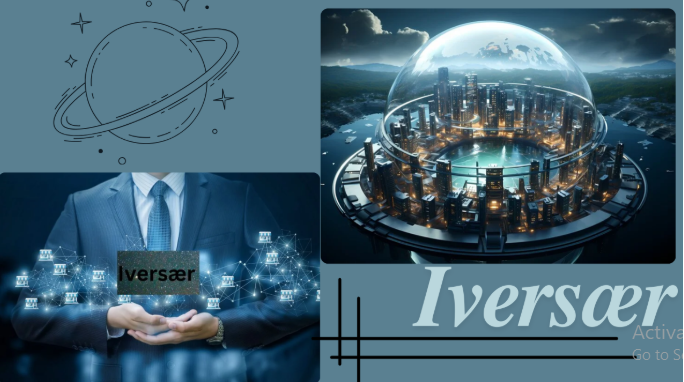In today’s rapidly evolving digital landscape, Iversær has become a fascinating term that’s capturing attention across industries. From technology and design to online culture, people are beginning to recognize Iversær as a new way of thinking — one that combines innovation, individuality, and versatility. But what exactly does Iversær mean, and why is it suddenly gaining so much momentum?
This article explores the meaning, origins, uses, and growing influence of Iversær in modern contexts. Whether you’re a digital marketer, creator, or tech enthusiast, understanding Iversær could reshape the way you approach creativity and digital expression.
What Is Iversær?
The term Iversær is derived from a blend of “inverse” and “versatile,” symbolizing the idea of reverse versatility or adaptive inversion. In simpler terms, Iversær refers to a creative approach where ideas, designs, or technologies are reimagined by flipping conventional perspectives.
For example, instead of following predictable digital design standards, an Iversær approach encourages creators to invert trends, find new meanings in old concepts, and build unique value through differentiation. It’s not just about being different — it’s about thinking in reverse to innovate forward.
In the online world, Iversær is often used to describe:
- Experimental design movements
- Reimagined AI-based creativity tools
- Content that defies algorithms and trends
- Digital communities embracing originality over conformity
The Origins of Iversær
While the term Iversær doesn’t have ancient roots, its conceptual foundation can be linked to postmodern art and reverse engineering. In the 21st century, the rise of AI creativity, generative art, and decentralized innovation has reignited interest in alternative thinking.
The digital culture shift has encouraged creators to:
- Question existing systems.
- Rework traditional frameworks.
- Challenge algorithmic predictability.
This is where Iversær thrives — as a philosophy of reinvention. It aligns with how today’s creators remix, adapt, and subvert mainstream ideas to create something meaningful and authentic.
Why Iversær Matters in the Modern Digital Era
In a time when AI-generated content and repetitive trends dominate social media, originality has become rare. The Iversær mindset pushes back against mass duplication by encouraging intelligent inversion — taking what exists and transforming it through creativity, logic, and experimentation.
Here’s why Iversær matters:
1. Encourages Authentic Innovation
Instead of repeating existing digital blueprints, Iversær motivates individuals and brands to invent from contrast. This can lead to groundbreaking art, products, and ideas that stand out in saturated markets.
2. Supports Algorithmic Diversity
Platforms like YouTube, TikTok, and Instagram often reward formulaic content. Iversær-inspired creators find ways to disrupt these algorithms by producing content that’s unpredictable yet valuable, fostering genuine engagement.
3. Empowers Individual Expression
In a homogenized digital space, being Iversær means embracing one’s unique perspective. It’s about personal digital sovereignty — creating on your own terms rather than conforming to viral templates.
4. Bridges Technology and Humanity
Iversær combines machine intelligence with human creativity, producing a hybrid innovation model. It represents a balance between AI assistance and emotional storytelling, ensuring tech-driven art remains meaningful.
Applications of Iversær Across Industries
1. Digital Design and Art
Artists are using Iversær techniques to invert color theory, reshape symmetry, and challenge visual predictability. The result? Designs that evoke curiosity and emotional depth.
For instance, digital painters or 3D modelers are blending AI suggestions with reversed perspectives, creating visual art that feels both futuristic and nostalgic.
2. Marketing and Branding
Brands adopting the Iversær philosophy are reshaping their identities by reversing customer expectations. Instead of polished perfection, they highlight authenticity, humor, or imperfections — connecting more deeply with audiences.
A good example is minimalist branding that deliberately breaks symmetry or uses “anti-aesthetic” designs to appear more human and relatable.
3. Technology and Software Development
In tech, Iversær manifests through reverse engineering and adaptive systems. Developers analyze existing solutions, invert their logic, and build improved frameworks. This approach drives efficient innovation, especially in open-source and AI-driven environments.
4. Education and Thought Leadership
Iversær-based learning encourages critical thinking. Instead of memorization, students learn through conceptual inversion — questioning “why” and “what if” rather than accepting surface-level answers. It’s an educational model rooted in exploration and creativity.
The Psychological Side of Iversær Thinking
At its core, Iversær is not just a trend — it’s a mindset shift. Psychologically, it aligns with the concept of cognitive flexibility — the ability to adapt your thinking to new, unexpected, or conflicting information.
People who embody the Iversær mindset often:
- Think critically and question norms.
- Find creative solutions under pressure.
- Embrace ambiguity and complexity.
- Value experimentation over perfection.
This makes Iversær particularly relevant in today’s world, where adaptability and creativity are the most valuable skills.
Iversær and the AI Revolution
The rise of AI tools like ChatGPT, Midjourney, and DALL·E has transformed how creativity operates. However, these tools often produce output based on existing patterns. That’s where Iversær thinking reclaims originality — using AI not as a replacement for creativity but as a mirror to challenge it.
For example:
- An artist may use AI-generated art but invert its logic, adding emotional or cultural depth.
- A writer might use AI drafts and then rewrite them from an opposite perspective, creating unique narratives.
- A designer could feed reversed color palettes or prompt inversions into an AI model to generate unconventional results.
In essence, Iversær and AI together redefine innovation, turning automation into co-creation.
How to Adopt the Iversær Approach
Here are practical ways to integrate the Iversær mindset into your work and creativity:
- Flip Your Routine Thinking – If something works, ask yourself how it would function in reverse.
- Challenge Industry Rules – Every field has unspoken norms; identify and experiment with them.
- Use AI as a Creative Partner – Instead of letting it define your work, use AI to push boundaries.
- Value Imperfection – The Iversær approach celebrates human irregularities as authenticity.
- Mix Contradictions – Combine contrasting ideas, styles, or mediums to create layered innovation.
The Future of Iversær
As digital ecosystems continue to evolve, Iversær is poised to become a cultural cornerstone. We’re entering an era where originality, adaptability, and authenticity are paramount. The people and brands that embrace inversion, reinterpretation, and creative resistance will lead the next wave of innovation.
Moreover, in the coming years, expect to see:
- Iversær-inspired AI tools that prioritize creative divergence.
- Educational curriculums built around inversion-based learning.
- Global movements that celebrate reverse design and cognitive freedom.
The future belongs to those who dare to think differently — and Iversær is the language of that difference.
Conclusion
To summarize, Iversær is not just a word — it’s an evolving idea, a mindset that challenges conformity and celebrates the art of intelligent inversion. Whether in technology, design, education, or marketing, the Iversær philosophy empowers individuals to break the algorithmic mold and rediscover creativity through contrast.
As the digital age moves forward, the Iversær concept will continue to inspire those who seek meaning, originality, and freedom in an increasingly automated world.






